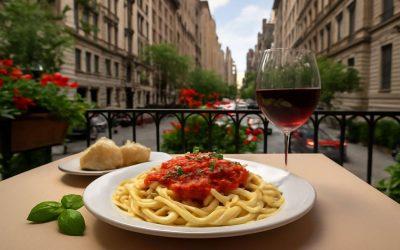Italian cuisine is a true culinary experience, offering a rich melding of flavors, aromas and textures. The cuisine is also steeped in history, with its roots buried deep into the country’s ancestral and cultural mutations. It’s a centuries-long story that unfolded along with Italy itself, and the legacy of its kings and warriors.
The diverse regions of the country have their own distinct culinary identity, shaped by regional recipes and ingredients. From the sun-drenched beaches of Sicily to the snow-capped peaks of Valle d’Aosta, each region offers a captivating journey through Italy’s food heritage.
An authentic italian meal usually involves several courses. The meal begins with antipasti, a selection of appetizers including cheese, grilled vegetables and olives. These are usually served with a glass of wine or an alcoholic drink. The second course, known as a primi piatto, is a pasta dish, soup or risotto. It’s followed by a secondo piatto, which is meat or fish served with bread and contorni (a side dish or vegetable/salad). The dinner is concluded with frutta e dolce, a selection of fruits and sweets.
One of the most well-known dishes is pasta – an ingredient that’s synonymous with the Italian kitchen. From spaghetti to penne and ravioli, pasta can be tossed in various sauces and flavoured with herbs, vegetables and even meats. It’s no wonder that this is a favourite dish of many people worldwide.
Risotto is another Italian classic, with its velvety texture and saffron-infused flavour. Brought to the region by the Moors in the thirteenth century, risotto is still a staple of northern Italian cuisine. Polenta is another traditional dish that can be found in the north of the country. Made with cheery yellow cornmeal whisked into boiling water or broth, and then cooked with generous amounts of butter and parmesan, it’s a warming meal ideal for the colder months.
Tuscany is a mountainous region of central Italy, home to towering cypress trees and picturesque landscapes. It’s also the source of ribollita, a filling soup that can be enjoyed throughout the year. Ribollita’s name translates to reboil, and it’s inspired by peasants who used to boil up leftover scraps of cabbage and beans in order to stretch their rations for one more meal.


0 Comments